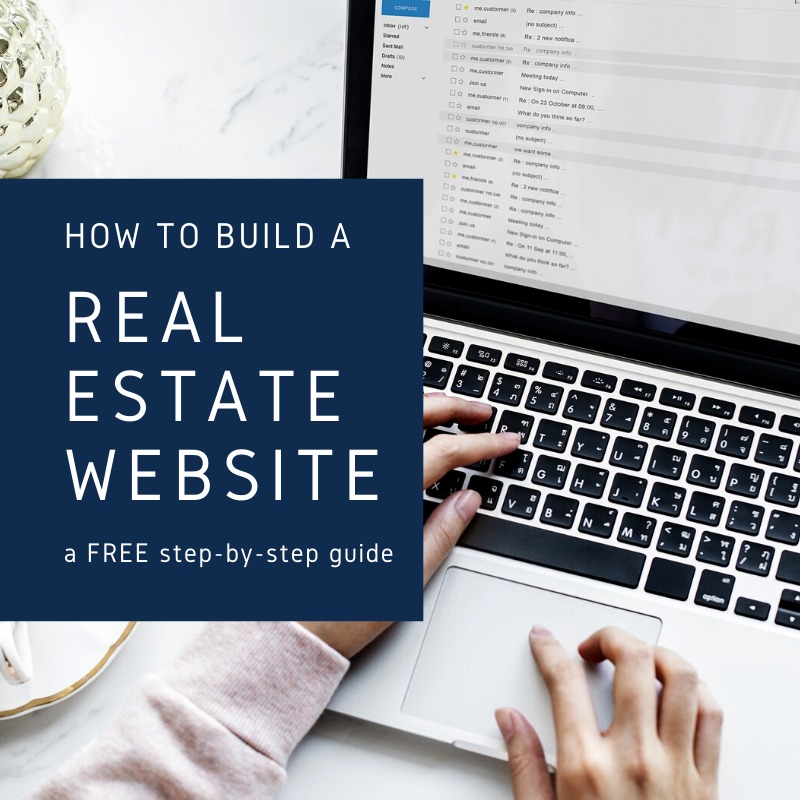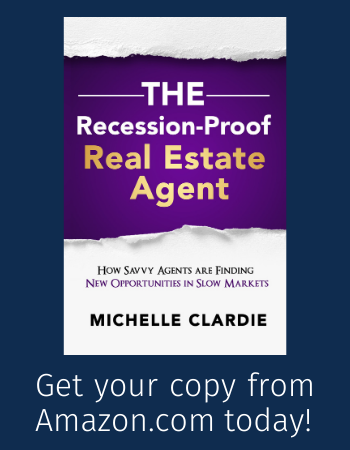Are you taking advantage of real estate content marketing to generate more leads and close more deals?
As the name implies, content marketing is marketing through your content instead of traditional advertising. “Content” includes text, images, videos, infographics, or audio files meant to educate and/or entertain your audience. Content marketing has exploded in the digital age and is still growing. And for good reason. Content marketing is three times as effective as traditional advertising, but it costs around 62% less.
If you haven’t already found your own real estate content marketing strategy, check out our list of ideas! You can choose any, or all, of these real estate content marketing methods to build your real estate business.

7 Ways to Take Advantage of Real Estate Content Marketing
1. Social Media Content
Social media marketing is an exceptionally popular form of real estate content marketing because:
- You have the potential to build a large audience of locals.
- It’s free (unless you pay for social media ads or pay to boost your posts).
- Since social media is easily accessible from your phone, you can post on the go (while you’re waiting for your clients at a showing or when you have some downtime at an open house, for example).
- Social media makes it easy for your followers to share your content, which gives you access to a wider audience.
But there are also a few major downsides to social media marketing for real estate agents:
- It requires constant time and effort. In addition to regularly creating your own social media content, you need to spend time engaging with posts from other users.
- Each platform has its own algorithm, and they’re all constantly changing, so finding what works is a moving target.
- There is a learning curve. If you’re new to social media, it takes some time to learn how to navigate each platform.
Now, we don’t have time to cover all the ins and outs of social media marketing in this post, but here is a list of social media real estate content marketing ideas:
- FAQs
- Quick tips
- Testimonials
- Common myths
- Home decorating ideas
- Local events
- Local charities
- Polls
- Quotes
- New listings, contracts, and sales
- Your services (especially if you offer unique services to your clients)
- Holidays
- Local businesses
- Do’s and Don’ts
- Local trivia
If you’d like a headstart on your social media content marketing, you can buy a content calendar online that tells you exactly what to post and when.
Or, if you’d rather have the content created for you so you just have to post it, check out DRIP by Key Real Estate Resources. DRIP provides fresh real estate marketing content to you each month!
2. Real Estate Agent Blog Content
The term “Content Marketing” typically refers to blogging. And blogging is probably the single most under-utilized marketing method available to real estate agents.
With a real estate blog, you:
- Increase your chances of being found online when buyers or sellers Google real estate topics. This is because blogging gives Google consistent content to index, which shows Google that your site is current and relevant.
- Have a chance to demonstrate your local market knowledge and show that you are the local market expert.
- Build trust with potential buyers and sellers before contact is ever made.
- Start engaging with leads via comments and the Contact Me page on your site.
- Earn passive leads. When Google starts directing people to your website, you get to spend more time working with clients and less time actively prospecting.
But only 11% of real estate agents maintain a blog. This is likely because:
- Most agents simply aren’t aware of the benefits of blogging.
- It takes time to write blog posts. Consider writing instead of spending time cold calling or door knocking.
- Writing is a skill not everyone has. You could do a video blog if you prefer. Or consider hiring a ghostwriter to do the hard work for you.
- Having a blog requires having your own website. You should have your own website anyway; your broker’s site won’t bring you leads directly. The good news is that you don’t need to pay a fortune to hire a web designer or pay monthly fees that end up costing substantially more over the years. With the tools available today, you can actually build your own professional website.
- It takes time to see results. As a real estate agent, planting seeds now so you can reap the rewards later is par for the course. But once your blog starts building momentum, Google will send you more and more traffic, so your benefits will continue growing exponentially.
Are you interested in learning more about blogging? Check out Mastering Blogging for Real Estate Lead Generation for a crash course in blogging for leads.
3. Newsletter Real Estate Content Marketing
A written real estate newsletter is a classic form of real estate content marketing. Your newsletter gives you a chance to touch base with your clients and sphere while providing them with useful real estate information.
You can distribute your newsletter digitally via email, post it to your blog, and share it on your social media networks. You can even print and mail your newsletter to your geo farm (if you have the budget for a monthly mailer).
The only downside to real estate newsletters is the time it takes to create them. Coming up with topics, formatting your pages, and actually writing the content is time-consuming. You can skip the formatting work by purchasing an inexpensive template on Etsy. And if you’d rather not invest the time in coming up with content ideas and writing the articles each month, DRIP includes a fresh monthly real estate newsletter with each plan (starting at just $9 per month).
4. Real Estate Website Content
In addition to the blog content you put on your website, you can create content on your website to attract and inform buyers and sellers.
Most real estate websites include the following pages:
- Home
- Properties (listings)
- About Me (for your real estate agent bio)
- Contact Me
- Testimonials (once you have completed your first few transactions)
- For Buyers (an overview of the process for buyers and the services you offer them)
- For Sellers (an overview of the process for sellers and the services you offer them)
Each page gives you an opportunity to market yourself and your business. Again, if writing is not your strong suit, consider hiring a professional writer. It’s important for your website content to make a good impression on your prospective clients.
5. Guides, Brochures, and eBooks
Are you currently using guides, brochures, and/or ebooks to market your real estate business? There are so many uses for this type of real estate content marketing! You can use them to provide information on:
- The buying and selling processes in general.
- Specific aspects of buying (like qualifying for a mortgage or making an offer).
- Specific aspects of selling (like prepping the house for market or staging).
- Real estate investing.
- Selling your home FSBO (once sellers see how much knowledge, skill, and time is required to sell a home, they may reconsider, and they’ll trust you as their listing agent since you gave them real info).
The best way to get started with guides, brochures, and ebooks is to clearly define your niche (as discussed in our post about creating your real estate business plan) and create the content that will best suit them. You can have a digital version of your guide/brochure/eBook ready to send to anyone who inquires, but you also have an opportunity to use this form of real estate content marketing to grow your mailing list! You can offer a PDF version of your guide/brochure/eBook on your site in exchange for the user’s name and contact information. We go into detail on how to set up funnels that will automatically send your PDF to anyone who uses the signup form for your guide/brochure/eBook in a post about building your email list.
As with most real estate content marketing, you also have the option to guides/brochures/eBooks from sites like Etsy. Check out this Buyer’s Guide as an example. Or this FSBO Guide to convert FSBOs into sellers.
And if you decide to get into full-length eBooks, you could make some money on the side selling your eBooks on Amazon.
6. Real Estate Content Marketing via Video
So far, we’ve been discussing written real estate content marketing (with some visual elements like images and graphics for your social media feeds, website, newsletter, etc.). But video is a growing option for your content marketing. And you can use it across many of the platforms we’ve already discussed:
- Social media: Post videos of home tours, neighborhood drives, or yourself simply explaining more about the buying and selling process (you could even do this via the Live feature).
- Blog: Video blogging (vlogging) is a great alternative to written content, especially if writing isn’t your thing. One recommendation: host the video on YouTube, and embed the YouTube video on your website (hosting the video on your website can slow your site down too much).
- Newsletter: You can absolutely do a video version of a newsletter. Every month, just record a video of yourself delivering market updates. You can host the “newsletter” on YouTube and share the link on social and via text or email to everyone on your CRM.
- Real estate website: You’ll still need some written content on your site, but video elements are a welcome addition.
- Guides/brochures/eBooks: Ok, these might be best as written content, but an interesting video alternative would be an online real estate course or virtual seminar.
7. Content Marketing via Audio
Audio-only content doesn’t lend itself to the other real estate content marketing methods we’ve discussed so far, but it presents another interesting opportunity: podcasts.
Now, podcasting isn’t a great fit for standard buyers and sellers because this is a one-off transaction for them; they’re not going to subscribe for ongoing content about buying or selling real estate. But it’s a perfect fit for real estate investors! Investors are always looking for new ways to find deals, clever financing hacks, and ways to increase profits. If your niche is investors, a podcast might be a great real estate content marketing tool for your business!
Get a Small Win
Great victories are the result of small wins. Before you move on with the rest of your day, get a small win.
Today’s small win challenge is to choose 2-3 of these real estate content marketing methods and commit to them.
If you’re feeling overwhelmed, and you just don’t have the capacity to start creating and scheduling content, take a professional headstart with DRIP by Key Real Estate Designs. For as little as $9/month, your social media and real estate newsletter content will be covered!










